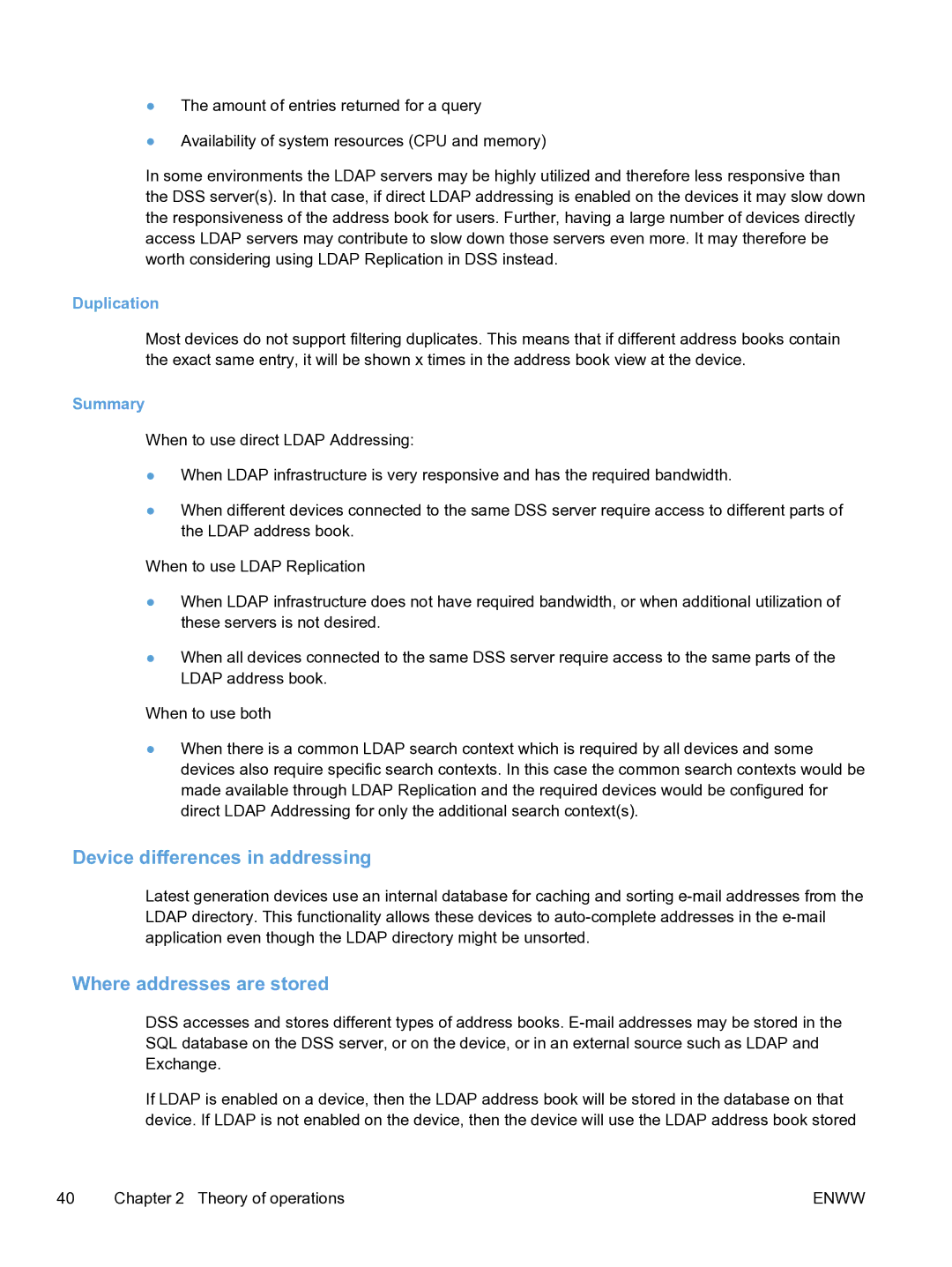●The amount of entries returned for a query
●Availability of system resources (CPU and memory)
In some environments the LDAP servers may be highly utilized and therefore less responsive than the DSS server(s). In that case, if direct LDAP addressing is enabled on the devices it may slow down the responsiveness of the address book for users. Further, having a large number of devices directly access LDAP servers may contribute to slow down those servers even more. It may therefore be worth considering using LDAP Replication in DSS instead.
Duplication
Most devices do not support filtering duplicates. This means that if different address books contain the exact same entry, it will be shown x times in the address book view at the device.
Summary
When to use direct LDAP Addressing:
●When LDAP infrastructure is very responsive and has the required bandwidth.
●When different devices connected to the same DSS server require access to different parts of the LDAP address book.
When to use LDAP Replication
●When LDAP infrastructure does not have required bandwidth, or when additional utilization of these servers is not desired.
●When all devices connected to the same DSS server require access to the same parts of the LDAP address book.
When to use both
●When there is a common LDAP search context which is required by all devices and some devices also require specific search contexts. In this case the common search contexts would be made available through LDAP Replication and the required devices would be configured for direct LDAP Addressing for only the additional search context(s).
Device differences in addressing
Latest generation devices use an internal database for caching and sorting
Where addresses are stored
DSS accesses and stores different types of address books.
If LDAP is enabled on a device, then the LDAP address book will be stored in the database on that device. If LDAP is not enabled on the device, then the device will use the LDAP address book stored
40 | Chapter 2 Theory of operations | ENWW |
